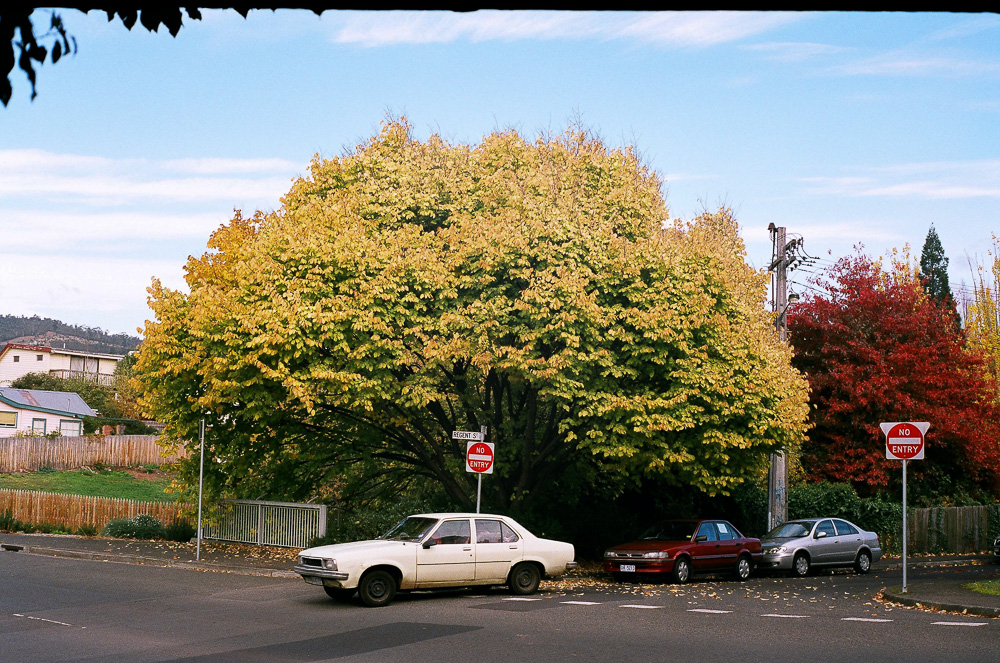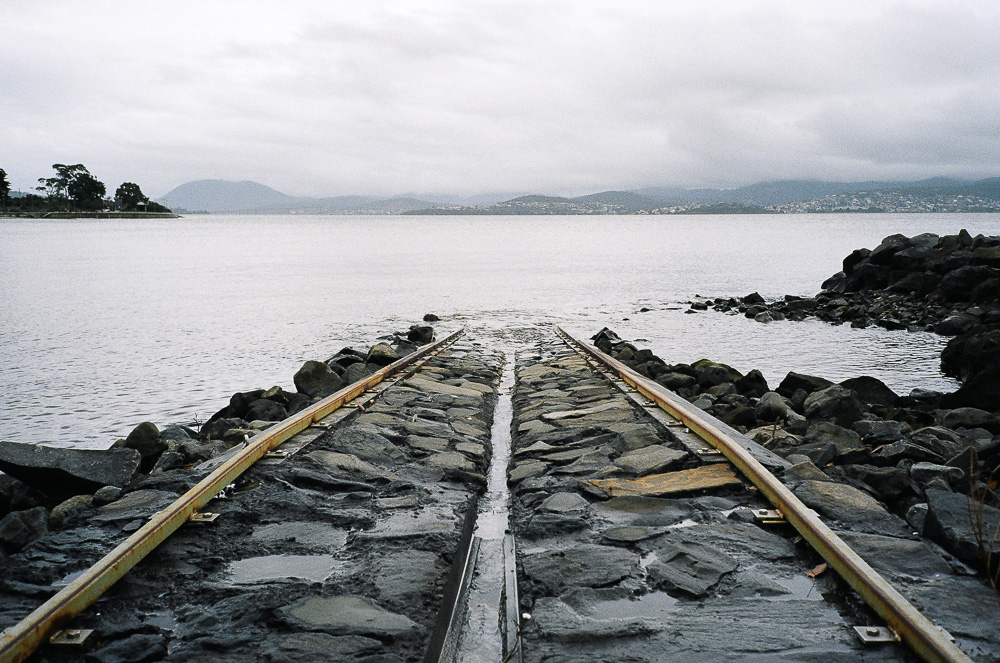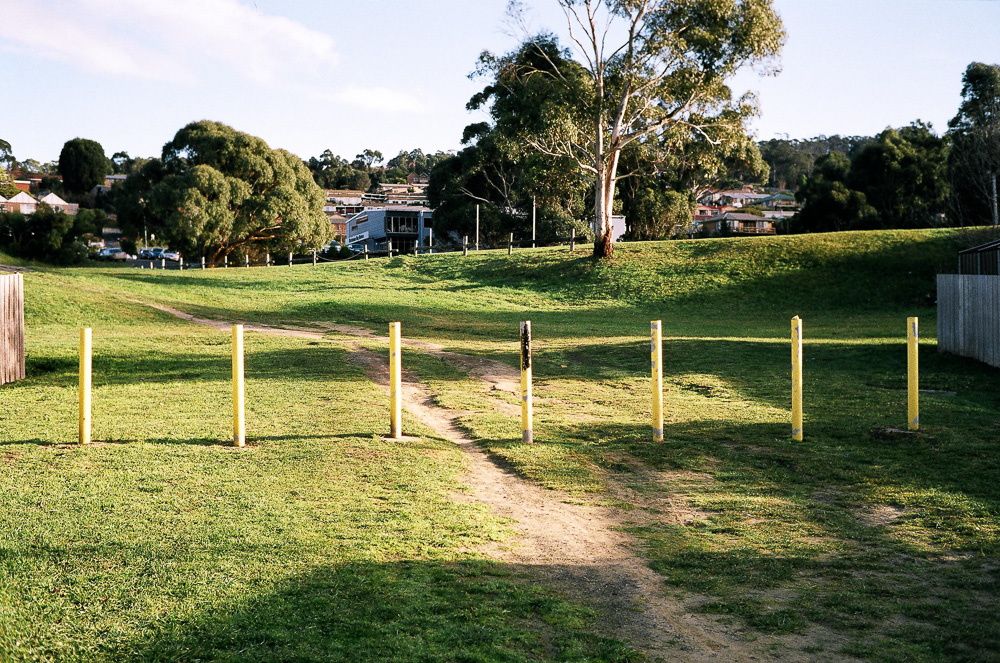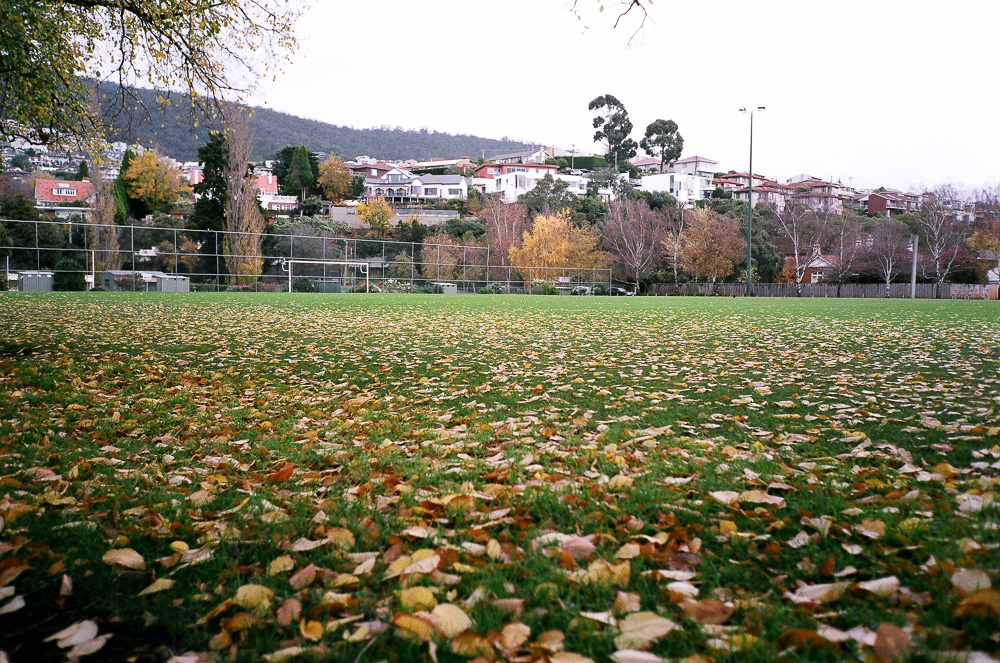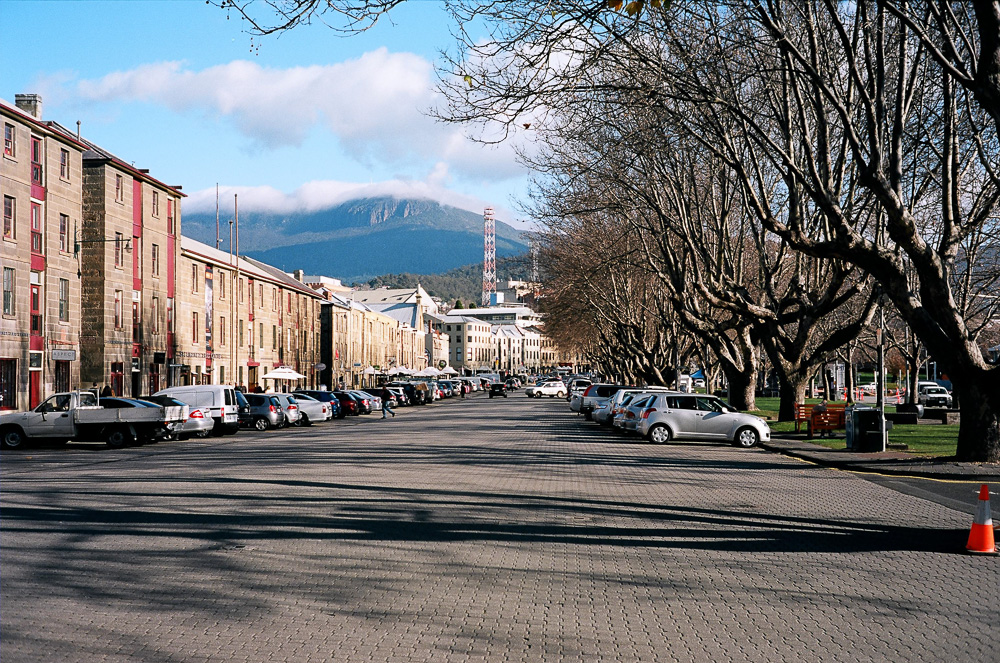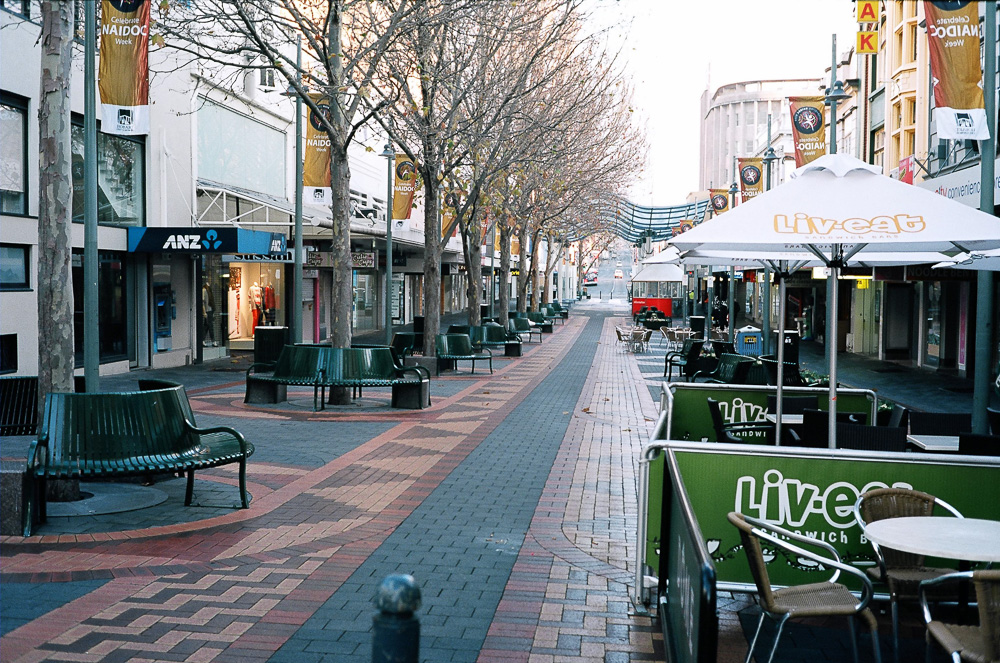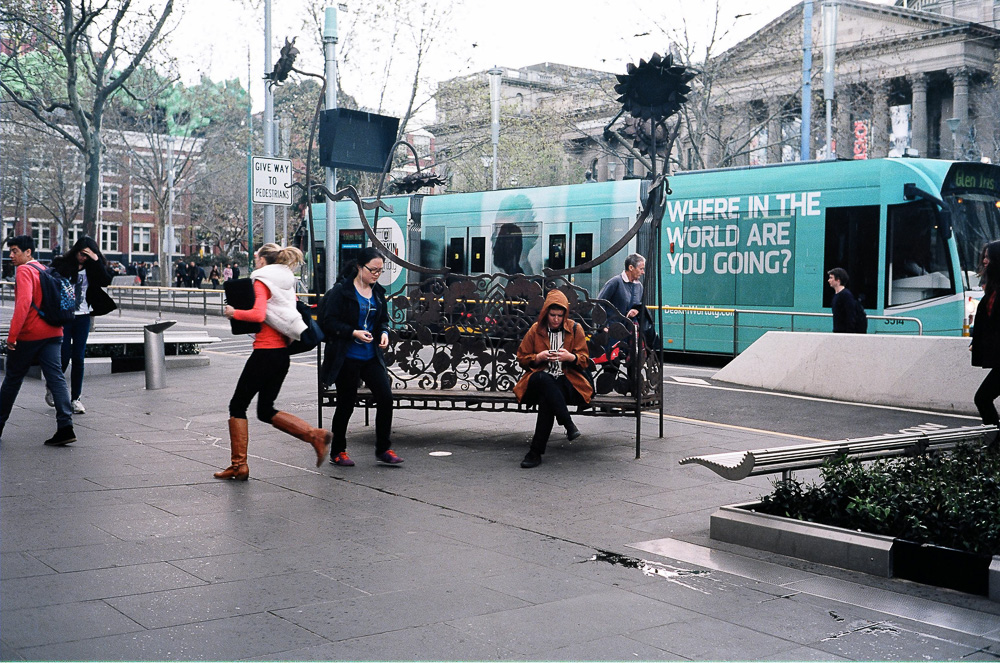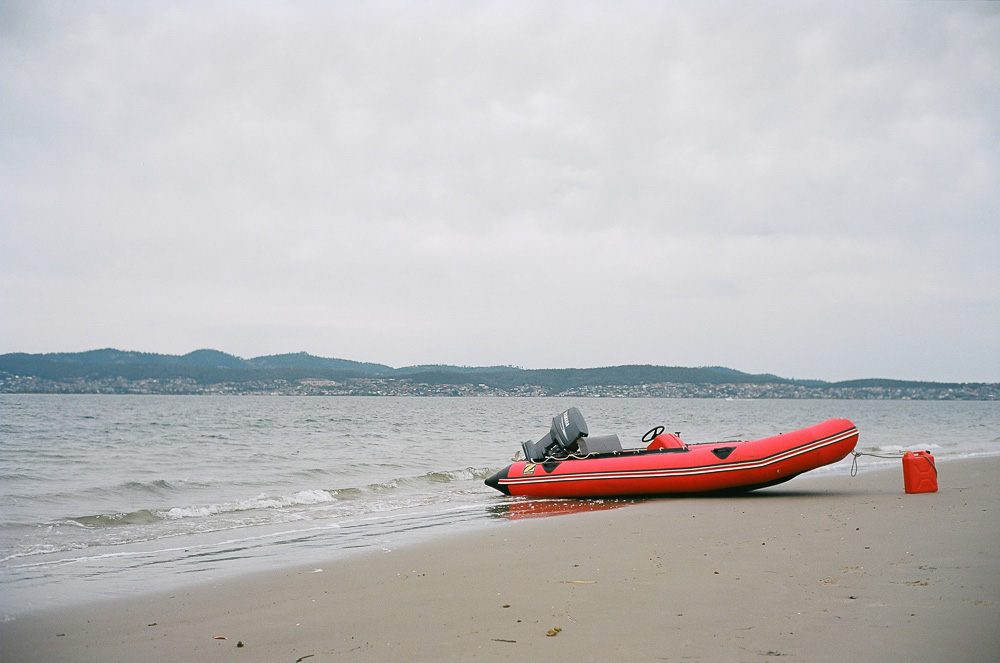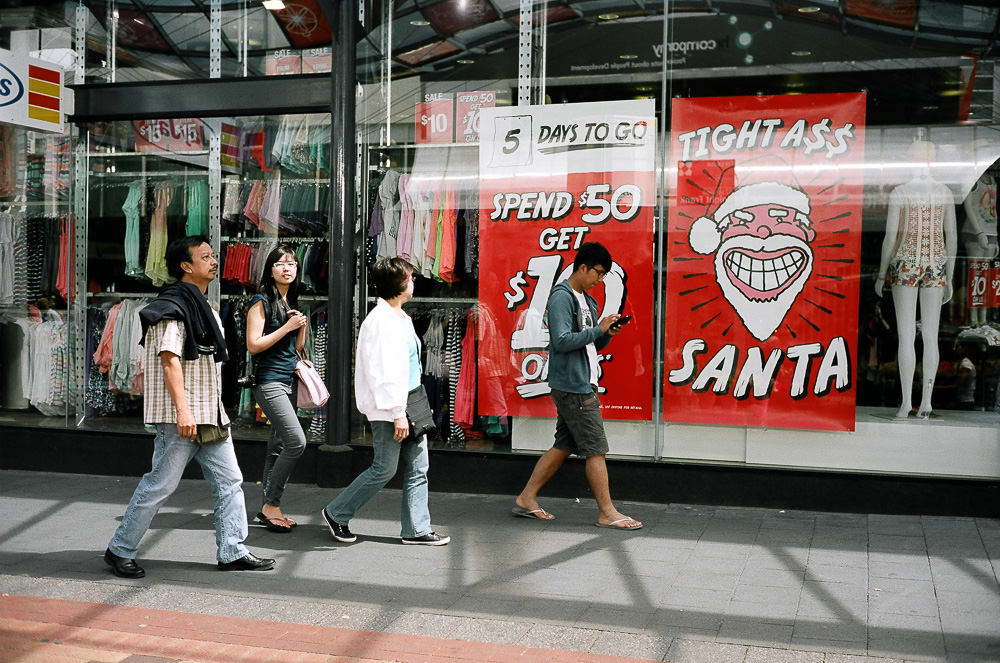The Benny Ling 2012 Photographic Year in Review: By the Numbers, An Introduction to Film, and Just Taking Photos
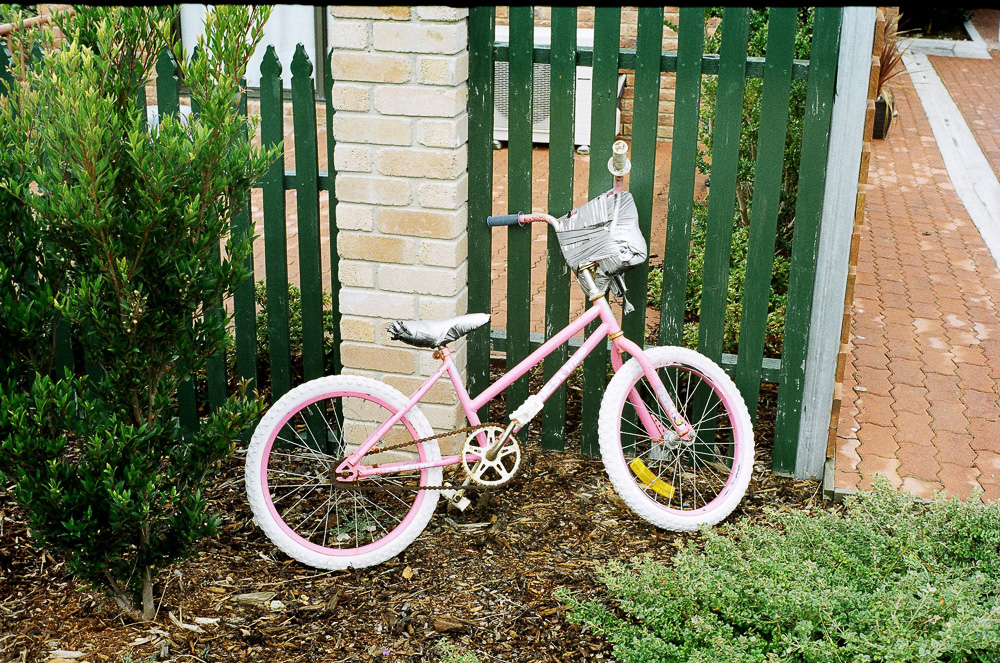
One of my favourite photos of the year was of this pink bike. Not this particular photo, but one of them.
2012 marks the first year I’ve taken photography seriously. I’ve always been interested in photography, but haven’t really gotten as involved with it as I did this year. It probably had a lot to do with the acquisition of my own DSLR kit late last year, and even more to do with doing my own photography — the shots I’ve seen other people take but have always wanted to apply my own spin or interpretation of, combined with the creative control a “serious” camera like a DSLR allows.
By the numbers
Lightroom says I’ve taken 7343 images with my 60D this year Of those:
- 3493 were taken with the Sigma 30 1.4
- 2105 were taken with the Canon 17-55 2.8
- 662 were taken with the Canon 18-135 3.5-5.6
- 632 were taken with the Canon 24-85 3.5-4.5
- 200 were taken with the Canon 50 1.8
- 251 were taken with a Samyang(?) 6.5mm fisheye
The Sigma’s high numbers are pretty easy to explain: it’s the lens that got busted out at my first ever wedding reception, and it’s usually the one that’s attached to my camera the most often. It’s usually the lens that I take when I’m going to an event at youth, and of course, being the fastest lens I own means it gets used quite a lot. Overall, I quite enjoy the Sigma — it’s a great piece of glass when you consider the price. Fast, with a great focal length for a crop sensor.
The 17-55 is easily the most expensive piece of glass that I own, and in a few respects it’s a better lens than the Sigma. Its numbers are lower than the Sigma on a pure photos-taken basis mainly because I don’t use it as much. I’m not sure why, because it can produce some truly great photos. It’s the lens I took with me to Melbourne that one time, the one I used at the Relay for Life, and what I do most of my landscapes with. But I seldom use it at youth events, purely because it looks (and feels) intimidating; people tend to shy away from it. It may produce some excellent photos, but it’s not exactly subtle. It’s heavy, too — almost a full kilo. In an ideal world I’d like this lens to be the one permanently attached to my 60D, but such is the advantage of an interchangeable camera system.
The rest of the numbers aren’t exactly special: the 18-135 was the first lens I owned, along with the 50 1.8, the latter of which doesn’t get much use due to the slightly longer focal length and the fact that I have the much better (sharper, faster) Sigma to use instead. Maybe when I go full-frame I’ll use it more, but that’s definitely for another time.
An introduction to film
Around April, I bought an old film camera, and experienced film photography for myself. Our family had an old film point and shoot before the days of digital, of course, but I rarely used personally. But the Yashica Lynx 14 I bought off an OCAU forum member made me realise that maybe there was more to this photography thing than just pressing shutter buttons. Perhaps it was the fully-mechanical nature of the camera, or maybe it was having to wait to see if my photos were any good, but film photography made me start enjoying photography all over again.
I ended up loving that Yashica Lynx — non-operational/slightly temperamental light meter and all — so much that it ended up with a stuck shutter, which was the end of that particular camera.
But by that stage I couldn’t give up rangefinder photography, which has more advantages than just looking the part with a fancy film camera. Long story short, I ended up buying a Voigtländer Bessa R2A camera, paired with a Voightlander Nokton 40 1.4 to replace the old (like, late 1960s-era old) Yashica Lynx.
The Bessa is one of the best cameras I’ve ever owned. It’s a film rangefinder that doesn’t quite have the Leica pedigree, but it does feature a great viewfinder with that all-important Leica M mount — the preferred lens mount by interchangeable-lens rangefinder users everywhere. It might not be a Leica, but it’s Leica-like without carrying a Leica-like pricetag, which is more than enough for me.
I’ve only used the Bessa with the Nokton 40 1.4 — M mount glass is about twice as expensive as Canon/Nikon for even average (by Leica standards) glass, and some of the higher-end Leica gear is crazy expensive.
Around the same time as the Bessa acquisition I also picked up a film point and shoot. The Olympus mju-II is one of the better film point and shoots around, and that’s certainly proved to be mostly true in practice. The one thing that would prevent me recommending a rangefinder to anyone is the manual focus; I don’t mind manual focus most of the time, but sometimes, it’s just easier to not think about these things and just take the photo. The Stylus Epic, as it’s known in the US, features a 35mm f/2.0 lens — not bad for a relatively inexpensive camera.
As for how it takes photos — well, it’s not bad. It can actually be pretty good — just as long you’re not expecting brilliance every time; as much as autofocus can be a blessing, there are times when it totally misses the mark.
But enough about the cameras, how many frames of film did I do in 2012? Lightroom says 1041 film shots so far, but that doesn’t include the first two rolls that I didn’t want scanned copies of. Of those:
- 323 were taken with the Yashica Lynx 14 (excluding the first two rolls, which I don’t have scans of)
- 631 were taken with the Bessa
- 87 were taken with the Olympus mju-II
Lastly with the numbers thing: 247. That’s how many prints I had made of my various photos, both film and digital. It’s a funny thing — prints are still something that carry some sort of value, in a world that’s largely marginalised film and gone straight to digital.
If the numbers are to be believed, I shoot film on about a 1:7 ratio; one film frame for every seven digital ones. But that’s doesn’t take into account the higher “keeper” rate of film, and it also doesn’t take into account the high FPS that digital can do, which can sometimes feel like you’re just shooting and praying you capture something good (which happens often, thanks to fast-paced events at youth).
I mean, my film photography has gotten to the stage where I might only bring my film rangefinder along on an interstate trip, like that time I went to Melbourne with just my Bessa kit and a few rolls of Ektar and Portra.
Just taking photos
Strictly speaking, my digital photos always turn out to be much higher quality than my film ones. So why do I usually take my Bessa out instead of my DSLR? It’s a convenience thing, for sure, but it’s also why I’ve been considering a high-end digital point and shoot. I’ve lusted after a Sony RX100 for a while now, all because in my mind, it combines the convenience and portability of a rangefinder (complete with focus peaking for those times I want to do manual focus) with the higher-quality that digital images provide.
Don’t get me wrong, I still recognise the advantages of digital photography. On a pure spec-sheet comparison, digital wins out all the time. It’s more accessible. More fully-featured. I can do more with digital. But when it comes down to just taking photos, shooting with a film rangefinder makes taking photos entire orders of magnitude more fun. Without descending into some kind of hipster-wankery, it makes the whole process of taking photos more enjoyable, like you’re not just taking photos, but recording memories.
2012 was the year of taking photos, so it’s strange that I remember the times I didn’t take a photo more than the times I did. Looking back, I can remember with crystal clarity both times I wanted to — and should have — taken a photo, but didn’t. Both times were when I was out and about, and yes, both times involved girls.
The first was this one time around the golden hour — back when the golden hour was in the afternoon, instead of in the evening. There was a girl who had amazing blonde hair, who was sitting at a bench between some trees. Had I taken the photo at that moment, when the sun was shining through the trees and lighting up her hair, the resulting photo would have been pretty great — or at least, that’s what I keep telling myself. The reality could have been much different — but I guess we’ll never know, will we? I had the camera in my hand, and it was halfway to my eye when the girl looked at me quizzically. It killed the moment, and I regretted it almost immediately, but that was that — the moment was gone, and the taste of regret filled its place.
The second was when I was just walking into a laneway. Not exactly an alley, but not a street either. A gorgeous young couple were also in the same laneway, and they wouldn’t have looked more out of place than if they had stepped straight out of the pages of a high-end fashion magazine. Truly stunning. I had the camera in my hand, but for whatever reason, couldn’t bring myself to lift it to my eye. It could have been the fact they were walking in my direction, the fact that they were looking straight at me, or the fact they were both intimidatingly attractive — either way, I passed by them without saying a word.
I should have taken the photo on both occasions1. I should have taken the photo with the girl looking into the camera. I should have turned around and asked the couple for a photo.
But I didn’t, and I missed out on what could have been two of the best photos of 2012.
Which is amusing when you realise that the one time you did take a photo, not caring who noticed or what they might say, is the one time a guy actually confronts you about it. 2012 also marked the year I managed to get into my first street photography confrontation — that moment when someone questions what you’re doing taking a photo of them (or of others).
I’m in the Hobart mall, and I sit down on a bench. Opposite me, less than five meters away, there’s a guy eating a peach who notices me and my camera. I didn’t intend to take a photo of him at that point, so I start looking around, taking in the scene to see if anything interesting will happen. A few seconds passes, and nothing does. But there’s a guy about to walk past the peach-eater, so I raise my camera and snap a photo. I can see the guy with the peach looking at me straight through the viewfinder as I do, and as I’m lowering the camera and winding on the next frame I notice the guy eating the peach waving me over. I stand up and walk over to the guy, putting on a big smile to appear as friendly as possible. He asks me if I just took a photo of him, and I respond by pointing in the vague direction of the guy that just walked past and saying no, it was a picture of the guy that just walked past (not entirely true as the peach-eating guy was in the frame, but he didn’t need to know that). He then asks me why I was taking a photo of that guy, and I respond by grinning and saying something along the lines of “that’s what I do; I take photos of randoms on the street”. Not exactly the most eloquent of responses, but I didn’t want to make a scene (I doubt he would have either, as the mall was packed that day, but you can never be too sure).
Here’s the kicker, though: then he wanted me to show him the photo I had just taken. I was about to respond, but I saw the look on his face as he realised I had a film camera — he noticed it too, and he mumbled in a slightly downtrodden tone “oh, you can’t”. That was pretty much that — I don’t think he had anymore to say at that point, and I was eager to get out of there, so I gave him a massive smile and wished him a Merry Christmas (it was Christmas Eve, as I recall correctly). As I was walking away, I heard a faint “same to you” from him.
I’m actually surprised it took so long for someone to question my photo-taking. Maybe it’s because I play the part of an asian tourist very well, or maybe people are friendly than I think. I’ve captured more than a handful of frames with people looking into the camera, but strangely, none of them seem to ask questions. That guy in the mall was the first, and I guess I’ll always remember that.
It wasn’t even that good a photo.
I recently got back my last two rolls of film for 2012, and I couldn’t be happier with how they turned out. You would have thought I’d have learned all about manual focus by now, but apparently not — and there are still “boring” shots lacking in exciting composition, but all the shots that I actually wanted to turn out good, did. Exposures are more or less spot on, and overall, I’m very happy with how the photos turned out.
And that’s just about the best way I know to top off a good year.
-
Slightly creepy? Yeah, probably. It’s not my fault all I want to do is take photos of pretty girls; they are, after all, the more photogenic gender. I’d like to say it’s a guy thing, but I’m afraid it might just be a Benny thing. For what it’s worth, though, I was after these photos because they would have been good photos — the subjects just happened to be the icing on the perfectly-exposed cake.
